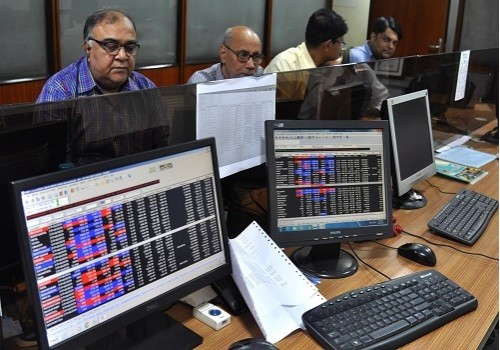Weekly View on Fixed Income markets by Puneet Pal, Head-Fixed Income, PGIM India Mutual Fund

Follow us Now on Telegram ! Get daily 10 - 12 important updates on Business, Finance and Investment. Join our Telegram Channel
Below the Weekly View on Fixed Income markets by Puneet Pal, Head-Fixed Income, PGIM India Mutual Fund
Bond yields in emerging markets, including India, have edged higher over the last few months and we may continue to see rangebound movement in the bond markets for another one month till currency stabilises. The volatility in the FX markets has reduced the probability of a rate cut in the February MPC meeting though we continue to believe that the February MPC meeting will be a live meeting for a rate cut. Given the evolving inflation/growth dynamics, we continue to expect a shallow rate-cutting cycle of 50-75 bps in CY2025.
Indian bonds remain attractive on back of the evolving growth /inflation and favourable demand-supply dynamics. There is a high probability of a sovereign rating upgrade over the next 12-18 months and Indian bonds getting included in more bond indices. The scope for rate cuts in India is on account of high real positive rates and the need to encourage private investment.
Investors can look to increase allocation to Fixed Income at every uptick in yields. We expect long bond yields to continue to find support at higher yields and expect the benchmark 10yr bond yield to gradually drift lower towards 6.50% by Q4 of FY25.
Investors with medium to long-term investment horizon can consider Dynamic Bond Funds having duration of 6-7yrs with predominant sovereign holdings as they offer a better risk- reward currently. Investors having an investment horizon of 6-12 months can consider Money Market Funds as yields are attractive in the 1yr segment of the curve also.
Indian Markets:
Indian Bonds remained under pressure during the week as INR came under renewed pressure on the back of US dollar strength with DXY topping 108. The strength in the Dollar Index led to weakness across emerging market currencies. INR weakness and the unabated rise in global bond yields put pressure on the Indian yield curve which steepened a bit with the longer end of the curve underperforming. The benchmark 10yr bond yield ended the week broadly unchanged from last week’s closing at 6.79% though the longer-end bond yield edged higher by 1bps. The entire focus is currently on the currency as INR touched a life time low of 85.82 on an intraday basis against the US dollar, before suspected RBI intervention led to some marginal gains and INR ended the week at 85.54, compared to last week’s closing of 85.02. INR has depreciated at a faster clip this month, with RBI holding off from aggressive intervention. INR has depreciated by around 2.8% CYTD which is less than most emerging market currencies. INR relative outperformance is backed by better macroeconomic variables and also on account of continued RBI intervention, which has impacted domestic banking liquidity over the last couple of months. The Current Account Deficit came in steady at 1.20%, of GDP for QE Sep 24 compared to 1.10% of GDP in the quarter ending June 24. Capital account remained in surplus at USD 30bn and the overall BOP surplus came in at USD 18.60bn in QE Sep from USD 5.20bn in the previous quarter, though the current account deficit is likely to expand in the Dec quarter.Banking sector liquidity has remained tight resulting in a sharp uptick in money market yields of up to 1yr maturity. 3-month maturity CD yields have risen by 20-25 bps over the last fortnight whereas the 1yr maturity CD’s are trading higher by 10-15 bps, even as FPI flows both in equity and debt revived this month. The Finance Ministry in its economic review, for Novembe,r expressed optimism regarding a growth rebound in H2 of FY25 by projecting a GDP growth of 6.50% for FY25 and also mentioning that the “combination of monetary policy stance and macroprudential measures by the central bank may have contributed to the demand slowdown”. Even as optimism grows for a rebound in H2, the monthly fresh formal hiring saw a sharp decline in October with the number of new monthly subscribers under the EPF decreasing by 20.80% MOM, according to the latest payroll data released by EPFO. The EPFO data is considered crucial as it reflects the state of the formal labour market. MOSPI has begun the process of updating the base year of CPI from 2012 to 2024.
The OIS curve remained stable despite the rise in US bond yields as the 1yr OIS was lower by 1 bps, ending the week at 6.53% while the 5yr OIS was up 1 bps ending the week at 6.23%. Banking deposit growth continued to outstrip the credit growth this fiscal as the banking system deposits have grown by 7.80% while credit growth stands at 7.00% in FY25 so far.
International Markets
Global bond yields continued their upward trajectory as the benchmark US 10yr bond yield continued to inch higher with the benchmark 10yr yield ending the week at 4.62%, up by 10 bps during the week as bond markets in US factor in fewer rate cuts going ahead along with the challenge of high sovereign debt. In fact, as we look back at 2024, long-end bond yields have risen across the developed market space during the year in spite of rate cuts. On a YTD basis, the US benchmark 10yr bond yield has risen by 72 bps, the UK 10yr gilt yield has risen by 102 bps and the French 10yr bond yield has risen by 63 bps during the course of the year. Japanese bond yields have risen by 49bps so far in this calendar year. This shows that bond markets remain concerned about not only inflation but also about the high sovereign debt burden, which is putting pressure on yields. Meanwhile, Chinese economy continues to struggle with reports indicated that the Chinese financial services workforce was down 32% compared to 5 years back while in the real estate industry workforce is down 27%.
Above views are of the author and not of the website kindly read disclaimer










Tag News

Daily Market Commentary : New year celebration continued in the Indian Equity markets for th...



More News

Pre-Market Comment by Mandar Bhojane, Research Analyst, Choice Broking










